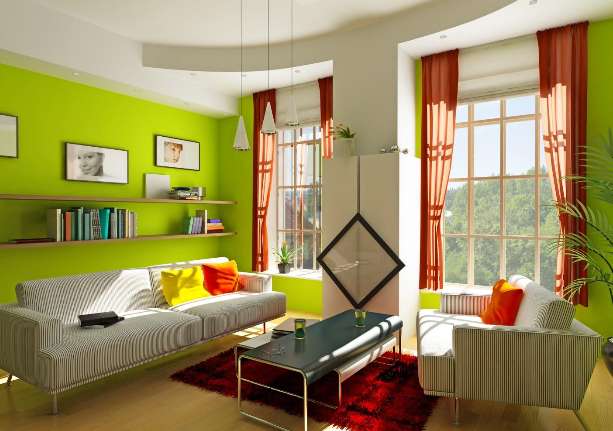
When staging a smaller home for sale, the limited amount of space can make it difficult for potential buyers to imagine themselves living comfortably. Even though people understand that they are buying a small living space – and you get what you pay for – you still have to figure out how to keep that small square footage from working against you.
Fortunately, selling small homes is not a mystery. There are specific strategies you can use to maximize available space and to make it appear larger than it really is. Here are five home design tips you can use to present your small residential property in the best light.
1. Remove clutter and eyesores.
Regardless of the size of the home you’re staging for sale, the first step is always to reduce clutter, perform easy low-budget repairs and remove anything else that would be an immediate turn-off to buyers.
Not only will this cleanup process give you the most impact, but it also helps to open up the space and make it feel larger and less cramped.
Now you don’t want to overdo it and present an empty house.
But do keep a few key furniture pieces along with only a few decorative or subtle personal items to give the home a “lived in” feel without making the area seem too impersonal or dull.
Three or four vintage hardcover books loosely stacked on the shelf – yes.
An entire wall covered in family photos – no.
2. Brighten up the space.
After removing unnecessary items and clutter, lighting is the next most important factor when making any space appear open, airy and inviting.
If your home has plenty of windows, pull open all the window coverings to let in that crucial natural light. Or even better – remove the window coverings and window screens completely, and wash those windows inside and out.
Also, turn on all the lighting fixtures and even consider adding a few small lamps to really brighten the place up for showings. It’s amazing how much larger a space feels when the lights are all turned on and the long shadows are eliminated.
To take it a step further, include reflective surfaces around the room such as decorative pieces made of polished metal, glass and mirrors. You don’t want them to be massive and gaudy, but you do want to catch a few highlights and spread the light around the room a little.
3. Use color strategically.
Your use of color when staging a small home is another important factor to consider.
Dark colors tend to make the space seem smaller, so you want to use them sparingly, if at all. The walls should be painted in bright, neutral colors such as tan, light gray or eggshell white. Carpeting should also be a light-to-medium neutral color. Light earth tones often work best.
Avoid bold colors for walls and furniture. Use them only sparingly to add a touch of color here and there.
You don’t have to go completely into minimalist territory here with white-on-white, but including a safe mix of white and light neutral tones is definitely the way to go.
Remember: this isn’t about showing off your personality and style. It’s more about presenting a neutral/blank canvas that assists buyers in picturing themselves living in this space, imagining their own personal sense of style impacting the home.
4. Feature convertible furniture.
Since you have a limited amount of space to work with, you’ll want to only include a handful of furniture pieces. But you also want to show potential buyers how they too can maximize this space for themselves. This is where multipurpose, convertible furniture comes to the rescue.
You could start simply with a few ottomans strategically placed, if you already have them. If not, consider some convertible pieces such as a coffee table that can expand into a small dining table for two – or a couch that converts into a daybed for those lazy, rainy weekends.
Multifunctional furniture pieces are very versatile and will show buyers that small spaces can be fun, cozy spaces.
5. Avoid massive pieces.
Lastly, avoid staging your small home with large, bulky pieces of furniture and shelving. A massive L-shaped sofa that takes up the entire living room could be replaced with a modern loveseat for two and a small end table, for instance. And a couple small floating shelves on the wall could replace that large bookshelf and open up more floor space.
You get the idea.
Staging a small living space for sale can be challenging, but as you can see you actually have a lot of options. Try out some of these small home staging ideas and guide your buyers into imagining all the possibilities your space provides.




 POSTED BY
POSTED BY 

